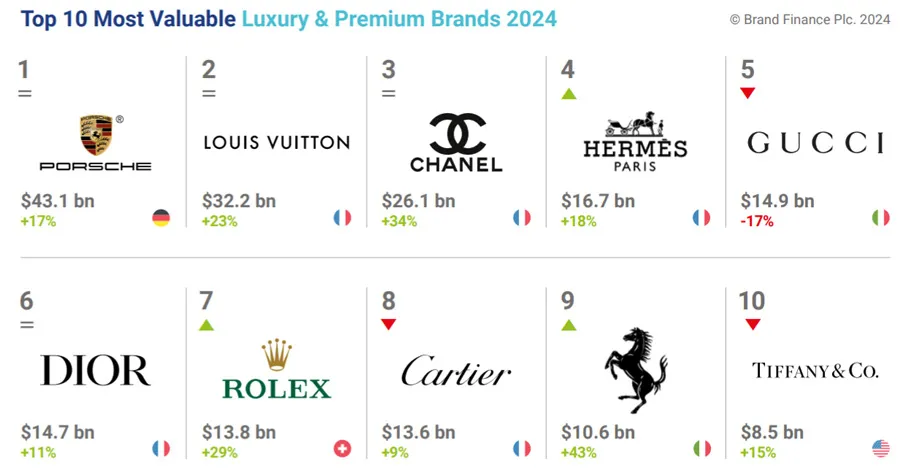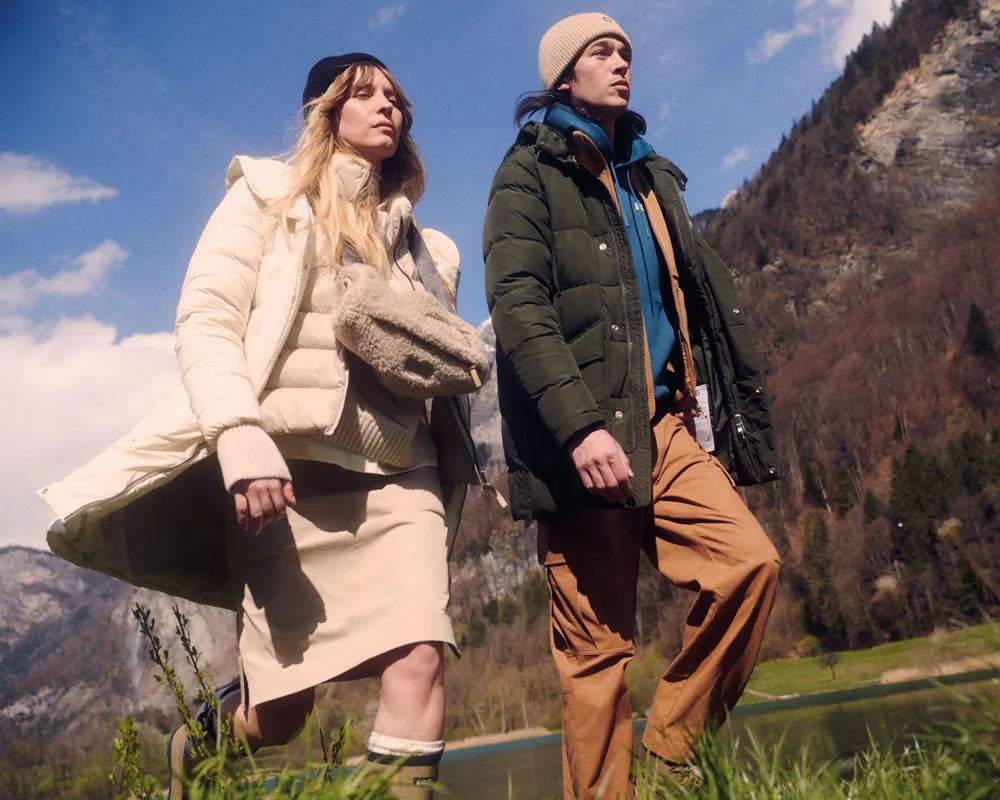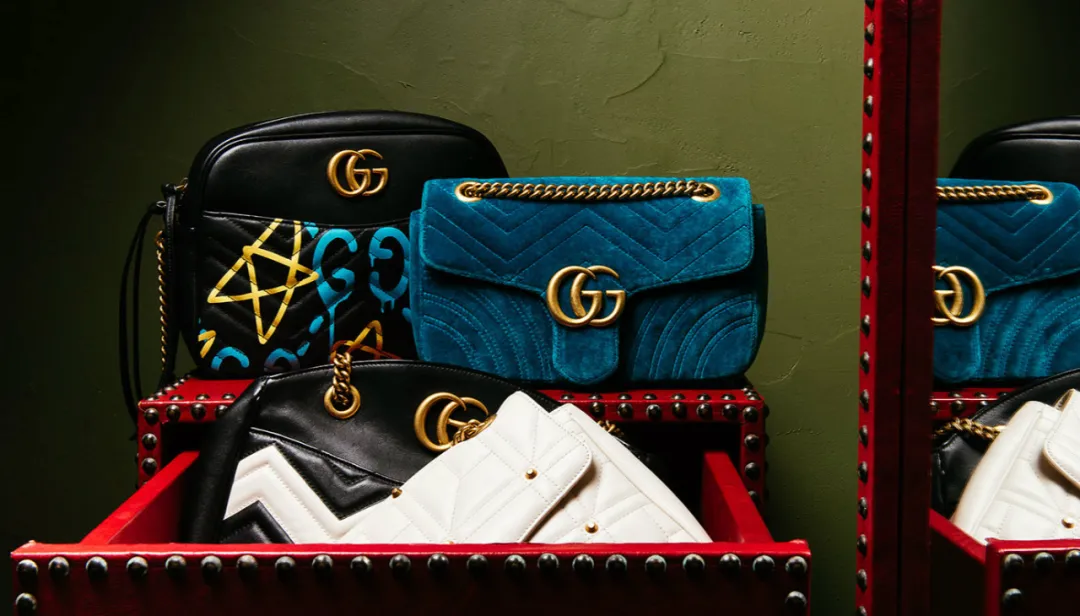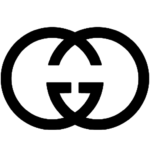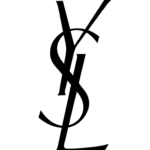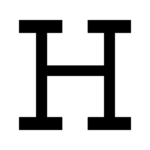The fashion industry is moving away from beauty.
Following the announcement in September that the Korean group NMIXX is the brand’s global ambassador, Luxury Brand Loewe recently released a 2023 early spring blockbuster starring NMIXX, seven members of the body have a single brand early spring on-screen ads.
Among them, a dress with a close-up face print quickly became a hot topic on social media.
It is reported that the original series of three were printed on the model’s face close-up of the same dress.
Jonathan Anderson, Creative Director of Loewe, who conceived the project himself, redesigned the dresses for the seven women with their faces in close-up.
Although many viewers and fans expressed difficulty in understanding this strange style, but it is undeniable that“Strange beauty” has taken over the fashion catwalk.
Whether in the Fall/Winter 2022 collection at the beginning of the year, Louis Vuitton paint can bags from Virgil Alboh, leather trash bags and duct tape tights from Balenciaga, or Moschino China headdresses from the spring/summer 2023 collection, loewe’s red-palm dress, Off-White’s slinky knee-high boots and even the bluetooth-enabled handbag from Balenciaga’s haute couture show may be signs that something eerie is making a comeback.
The trend for the quaint style started with the 2021.
At the beginning of the 2021 year, when Lady Gaga sang for the presidential inauguration in a Golden Schiaparelli dove gown, a series of dresses shaped like muscle armour and a halo of Virgin Mary began to make frequent appearances, it is sought after by celebrities and fashion leaders such as Kim Kardashian, Zendaya and Bella Hadid.
The revival of Old House Schiaparelli has made the grotesque aesthetic a hot topic in the industry once again, and after a year of fermenting, the trend for this kind of novelty-seeking look is getting stronger.
At Schiaparelli’s haute couture show last year, designer Daniel Roseberry, who single-handedly brought the brand back to market, continued to use dramatic silhouettes and ultra-realistic bouquets, animals and even human organs, the use of surrealism in the art of fashion.
The cyclical nature of fashion means that almost all trends seen today can be traced back to history, and surrealism are no exception.
The Surrealism was an art movement that began between World War I and World War II and aimed to combine reality and fantasy through a variety of creative media.
Elsa Schiaparelli, Schiaparelli’s founder, was one of the pioneers of bringing surrealism to the fashion scene, incorporating everyday objects into clothing and accessories, creating pieces such as lobster skirts and headdresses with facial shapes.
The author, Jos ã © Criales-Unzueta, wrote for I-D called “The revival of strange styles on the catwalk.”
A century after the 1920s, once again, we’re down a rabbit hole called the surrealism. Although today’s surrealism do not necessarily recreate the look of the past, it does inadvertently trigger a wave of creativity, because about a hundred years ago, the emergence of surrealism had a profound impact on both culture and art.
Industry insiders have commented that Jonathan Anderson’s consistent curiosity has shaped the coherence and consistency of his works, and his designs most clearly echo the surrealists of the 20th century, allowing the subconscious to control the work.
Nowadays, what attracts the market to LOEWE is not only the century old craftsmanship carried by the Spanish leather goods brand, but also the fresh anti aesthetic blood injected by Jonathan Anderson into this traditional brand.
Continuing the unconventional makeup of lipstick and broken roses, Jonathan Anderson’s accessory designs at last year’s two LOEWE women’s fashion shows were full of humor and surrealism. Along with the pointed leather shoes with a small half of the jeans, the simulated high heels that burst the balloon on the high heels, and the shoes that were filled with bloated balloons and presented a dazzling illusion effect, as well as the puffy style high heels that looked like Barbie or Minnie’s, they all attracted a lot of attention on social media.
Under the leadership of Jonathan Anderson, LOEWE has become a leading indicator of innovative fashion shoe design trends.
This kind of wild and imaginative behavior has undoubtedly brought about a sustained surge in popularity on social media. On Twitter, a netizen initiated a vote on puffy style high heels, with LOEWE leading its competitor Balenciaga by an absolute advantage.
It has become the fashion industry’s response to the Internet era to cause viral transmission through exaggerated appearances and manifestations.
At the end of the 2023 spring/summer fashion show, Coperni invited model Bella Hadid to showcase a spray painted dress, which was named the hottest moment of 2022 by Lyst. According to the fashion industry data marketing analysis platform Launchmetrics, the impact of this live performance in media communication has created virtual value of up to $26.3 million.
In August this year, the American designer brand Alexander Wang invited the short video creator @ Simeiko, who has more than 4.45 million fans in Tiktok, to present the early autumn 2022 series of new products with three unique short videos, which attracted wide attention. Previously, the brand also invited a domestic model specializing in Taobao middle-aged and elderly clothing, Liang Xiaoqing, to appear on camera and shoot three short films.
A series of marketing methods and image output are regarded as “unfashionable marketing” by commentators. Many critics have expressed their disapproval of Alexander Wang’s entertaining means of communication, believing that it is not conducive to the fashionable brand style of Alexander Wang, but also tarnishes the image of cultural exporting countries.
However, some supporters claim that the combination of Alexander Wang and domestic online celebrities only uses the humorous context popular in European and American social media to give Chinese culture a free ride on fashion creativity and Internet communication, potentially spreading its influence.
Earlier, Balenciaga, who was once controversial about the studio style because of the Qixi series in China, has established a tolerance for such avant-garde style for the mass market after a series of “strange beauty” exports. The so-called “unfashionable flavor” short films released by the brand on social media platforms such as Tiktok left a deep impression on the audience. Although the public is still controversial about this, it is undeniable that the brand has achieved a new path in the highly competitive digital marketing field.
With this unique brand image, Balenciaga’s commercial performance has also skyrocketed, becoming the fastest-growing brand in the past two years.
Faced with the rise of “quirky beauty” from creativity to marketing, one view holds that fashion brands in the era of social media are now attempting to create performance works or eye-catching designs in order to break through conventions and compete for limited attention. Behind this, there is more or less an intention to create topics, which is understandable.
Of course, such breakthrough attempts should be moderate. From the market’s crackdown on Balenciaga’s recent controversial advertising involving children, it can be seen that the creativity of fashion brands is not without limitations and needs to be strictly carried out within the scope of ethics and morality.
Another view is that many nonsensical ideas themselves reflect a design negligence, purely for the purpose of media speculation, and the topic is forgotten after discussion, without bringing long-term meaningful construction to the fashion industry.
However, fundamentally speaking, the resurgence of bizarre aesthetics should not only be attributed to the trend cycle of brands constantly seeking attention and viral dissemination, but also projects an aesthetic expression, which is an examination of current boring fashion and a desire for creativity.
For a long time in the past, the industry seemed to have been dominated by “perfect basic styles” and minimalist silhouettes. Although Gucci, led by Alessandro Michele, once dominated the market with its extremely decorative style, the core of this aesthetic is to stimulate the audience through excessive information. Therefore, once creativity is pushed to the pinnacle and falls, the resulting emptiness becomes more apparent.
The market then returned to the embrace of minimalism, as if complex elements were just adjustments in life, while classic wearable styles were the essence of fashion.
Due to the instability of the external environment, this idea has reached its peak in the past two years. The short skirt effect in economics has explained that styles during recessions tend to be more conservative, while dressing styles during prosperity are usually more subversive. Therefore, the argument about preserving luxury goods has led to the continued popularity of perfect basic styles, further squeezing the development space of fun design styles.
Nowadays, the popularity of bizarre aesthetics has naturally been influenced by the historical background. In an interview, Daniel Roseberry mentioned, “At this time, humor is more crucial than ever before.”
The epidemic is a huge crisis for everyone, and people are like springs that have been pushed to the lowest point. As long as they find a chance, they can pop out several times farther than before. Fashion researcher Lucianne Tonti pointed out that this highly existential design, whether it’s surrealistic styling or colorful colors, is a reminder that life can still be a party.
But in areas where the party lights cannot shine, global inflation and energy crisis have not slowed down, leading to sustained high costs of living, and the retail industry is facing huge challenges.
Hope and despair, two opposing atmospheres, together ignite the complex emotions of satire and perversion in today’s fashion industry.
The market may have realized the drawbacks of perfectionism, where standardized design cannot bring the stimulation and satisfaction that fashion should have, and the subsequent excessive marketing can even make people feel bored. The faster pace of squeezing creativity leaves no room for improvement, and the innovation of the balance system between creativity and business is far from keeping up with the process of business expansion. Therefore, people began to miss the fashion industry that was not eroded by commerce and the Internet and was still driven by creativity.
Only works that initially shocked or even made people uncomfortable can bring true identification. The popularity of “weird beauty” should be seen as a positive signal, representing a new generation of designers breaking away from conventional paths and reimagining the aesthetic boundaries of current fashion through various methods, in order to break away from homogenization and unity.
This pursuit of avant-garde is even more nostalgic.


